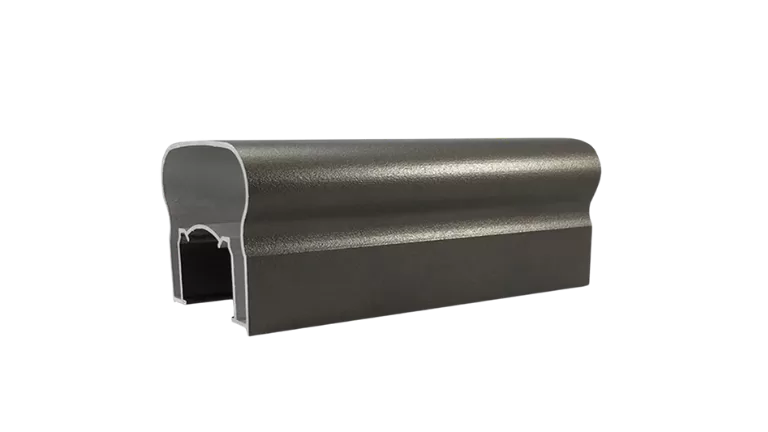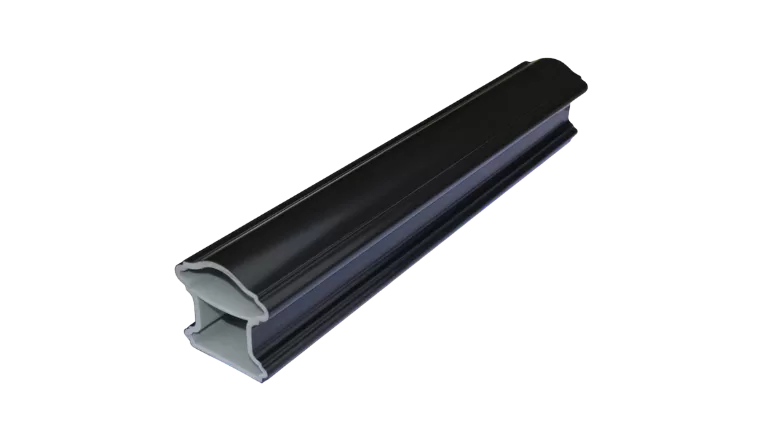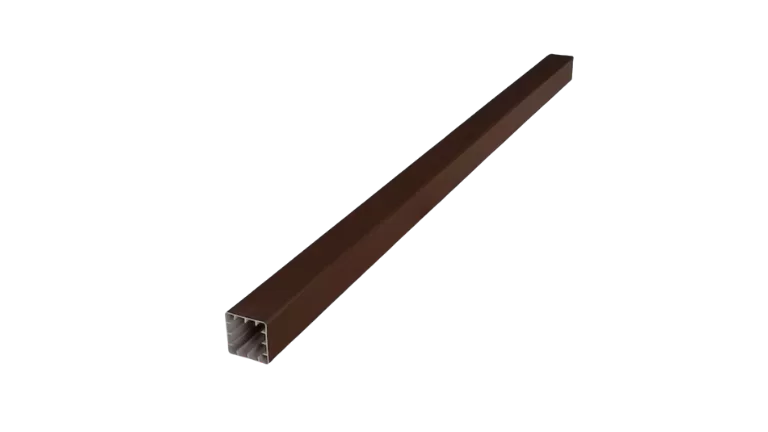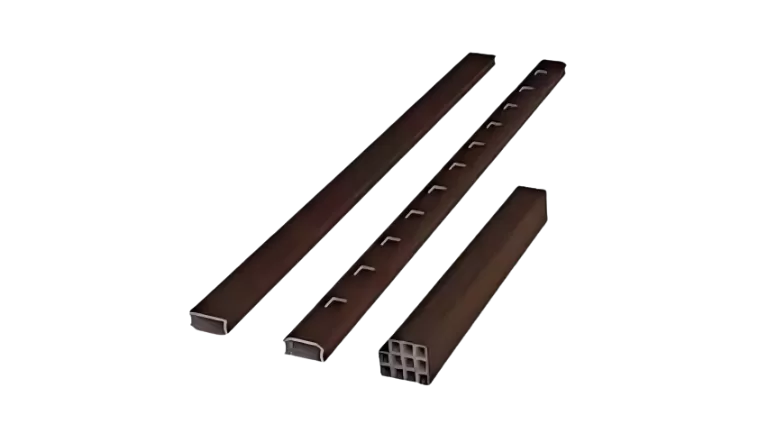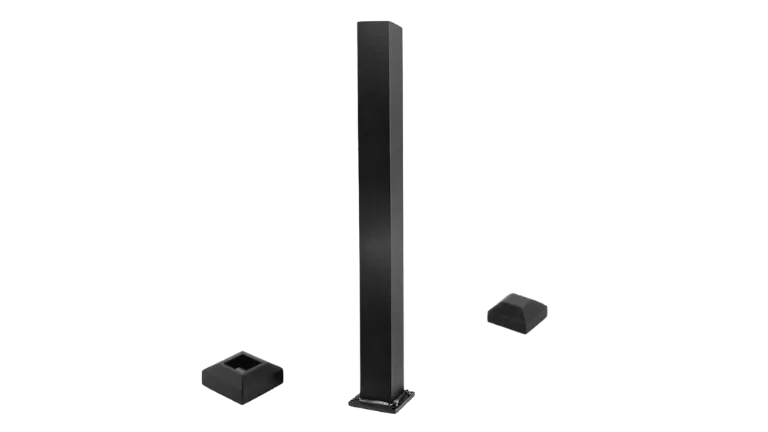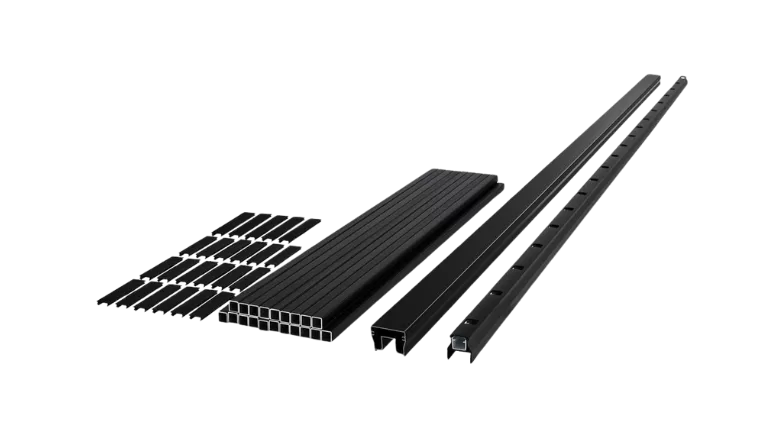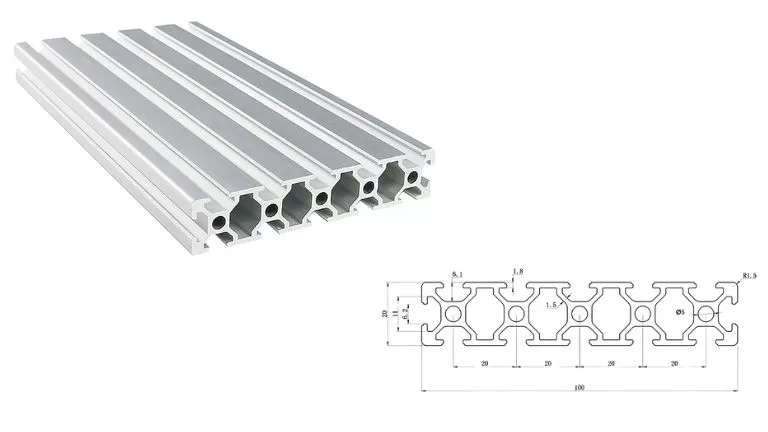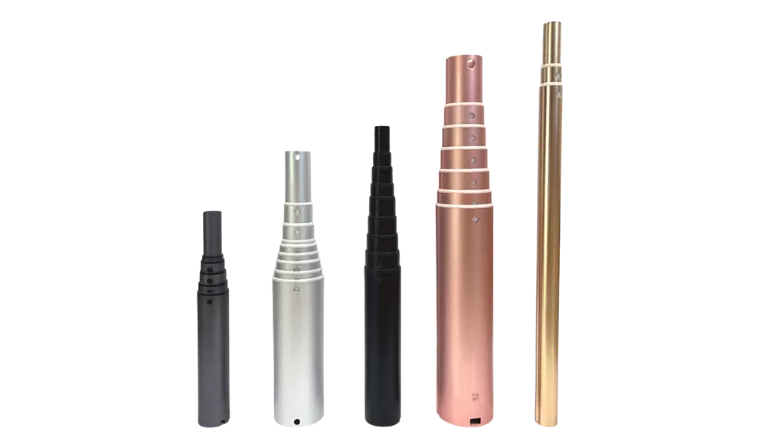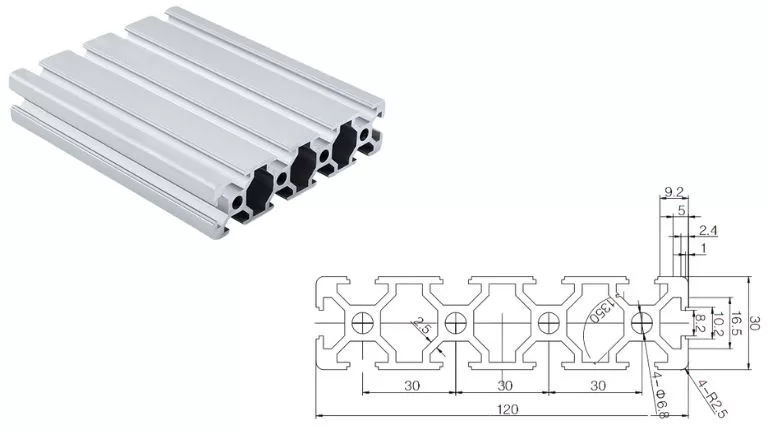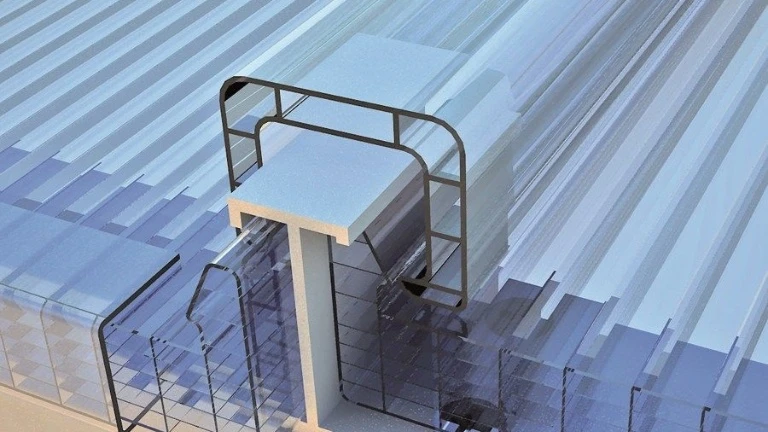Aluminum Cable Railing Profile

Aluminum cable railing systems feature high-quality stainless steel cables threaded through strong, extruded aluminum posts and rails. This innovative combination delivers sleek modern style, lightweight durability, and outstanding corrosion resistance. The open design maximizes visibility, airflow, and natural light, offering an elegant and safe barrier for decks, balconies, staircases, and more—indoors or outdoors.
As a leading Chinese manufacturer, HTS-ALU provides fully customized aluminum cable railing solutions tailored to your architectural and safety requirements. We support projects worldwide with advanced processing capabilities, flexible designs, and reliable quality—ideal for any residential, commercial, or public space.
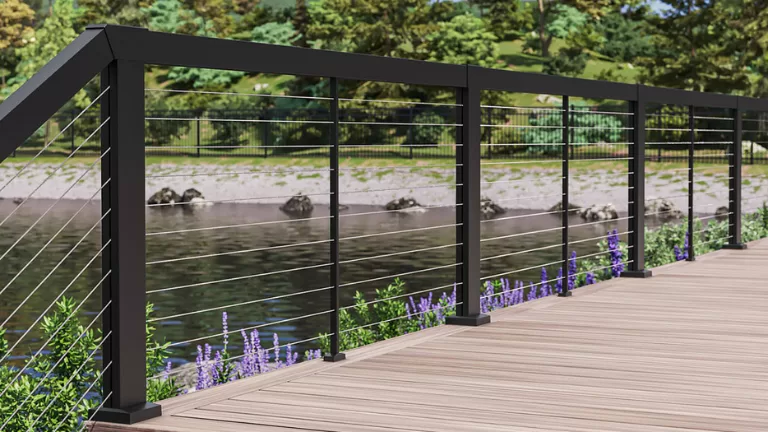
Aluminum Cable Deck Railing
Our aluminum cable deck railing provides a sleek, minimalist look that enhances any outdoor living space. Thanks to the combination of rust-proof aluminum and stainless steel cables, these railings are highly resistant to weather and corrosion, making them ideal for patios, rooftops, high-rise balconies, and waterfront properties. They offer maximum visibility and safety without obstructing your view.
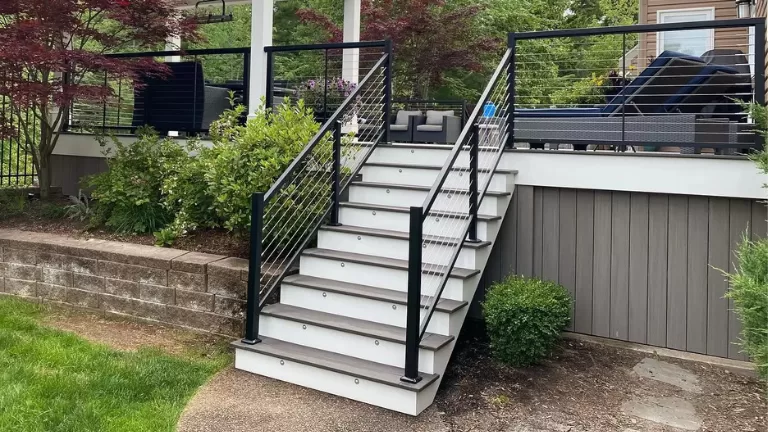
Aluminum Cable Stair Railing
Designed for both straight and curved staircases, these railings offer a modern, open feel for residential or commercial interiors and exteriors. The sturdy aluminum posts, combined with strong cable infill, ensure safety and durability while maintaining a light and elegant appearance. They can be customized in height, color, and layout to match different architectural styles and meet local building codes.

Custom Architectural Cable Railing
For commercial buildings, public projects, or unique designs, we specialize in fully custom aluminum cable railing systems. Whether you need special shapes, non-standard dimensions, or specific mounting solutions, our team can engineer and manufacture railings to fit complex site conditions and demanding aesthetic requirements. We ensure your project gets both style and structural performance.
Features of Aluminum Cable Railings
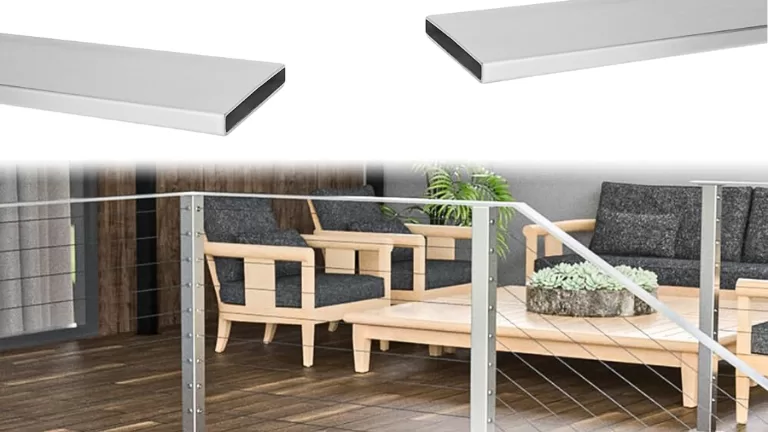
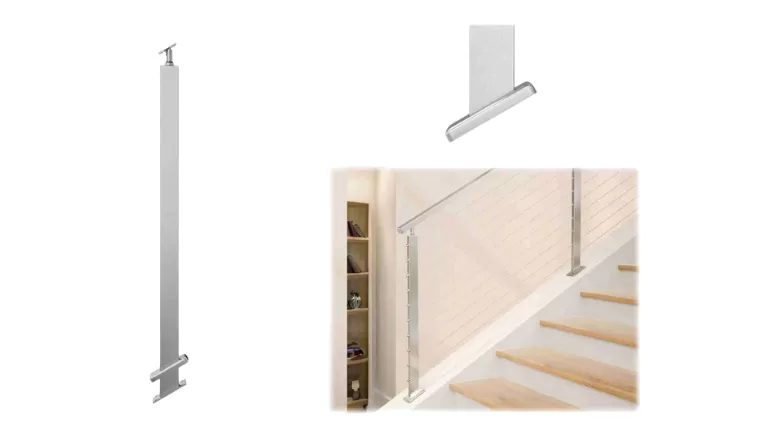

Applications of Cable Railing
Residential Spaces:
Used on balconies, decks, patios, staircases, and porches to provide safety while maintaining open views.Commercial Buildings:
Installed in office complexes, hotels, restaurants, and shopping centers for both interior stairways and exterior terraces.Public Infrastructure:
Applied in parks, pedestrian bridges, public walkways, and waterfront projects due to their durability and low maintenance.Recreational Areas:
Employed around swimming pools, rooftop gardens, and sports facilities for secure, modern barriers.Industrial Facilities:
Utilized in warehouses, factories, and industrial platforms for safety railings that withstand harsh environments.
Structure and Specifications
The manufacturing of aluminum cable railing systems begins with the aluminum extrusion process, where custom dies are created to form posts, rails, and other structural components. Following extrusion, these parts undergo heat treatment to improve their mechanical properties, ensuring enhanced strength and durability. Surface treatments—such as anodizing, powder coating, or custom color finishes—are then applied to increase corrosion resistance and aesthetic appeal. For project-specific requirements, additional fabrication steps like precision drilling, notching, or slotting are performed to prepare the components for cable installation and proper assembly.
Mold development
We have comprehensive in-house expertise to design and produce highly precise extrusion molds for aluminum cable railing systems. Our experienced and dedicated team works collaboratively and closely with clients to develop fully customized molds tailored to their specific project drawings or physical samples. This process ensures consistent, superior quality and optimal performance in every post and rail profile that we manufacture.
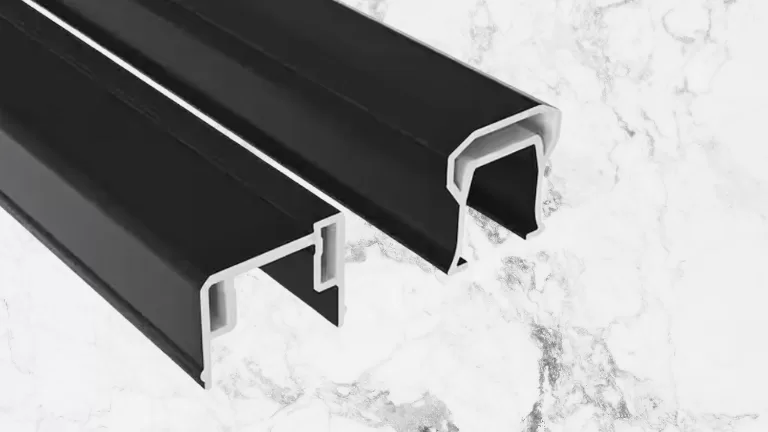
Surface treatment
Aluminum cable railing systems typically receive advanced surface treatments such as anodizing, powder coating, or wood grain finishes. These finishing processes significantly enhance corrosion and weather resistance, extend the product’s lifespan, and improve durability. In addition, they offer a wide variety of color choices and texture options, allowing the railings to seamlessly complement diverse architectural and design styles.
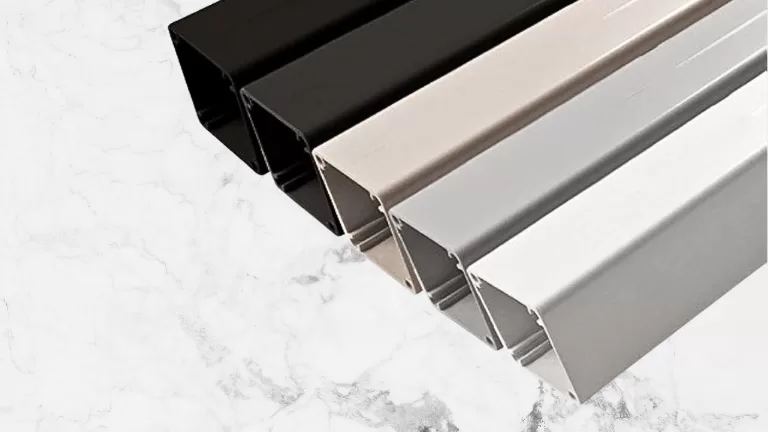
Processing services
We offer comprehensive fabrication services for aluminum cable railing systems, including precise cutting, drilling, punching, and grooving to meet detailed project requirements. With advanced equipment and skilled technicians, we ensure accurate machining and custom finishing of all components. This enables us to deliver railing parts that consistently meet exact specifications, enhance quality, and facilitate efficient, straightforward installation on site.

Aluminium Alloy for Aluminum Cable Railing
6063 Aluminum Alloy (Architectural Grade)
- Key Features:
- Outstanding resistance to corrosion, even in outdoor environments
- Smooth, high-quality surface finish ideal for anodizing and powder coating
- Excellent extrudability, allowing for the creation of complex and sleek railing profiles
- Moderate mechanical strength suitable for non-load-bearing components
- Typical Uses:
Frequently used for railing frames, infill sections, decorative trims, and handrails where visual appeal and long-term weather resistance are essential.
2. 6061 Aluminum Alloy (Structural Grade)
- Key Features:
- High tensile strength and structural robustness
- Strong corrosion resistance, including effectiveness in harsh or marine environments
- Suitable for various fabrication methods such as welding and machining
- Typical Uses:
Commonly selected for posts, support members, and other load-bearing elements of cable railing systems that require enhanced strength and reliability.
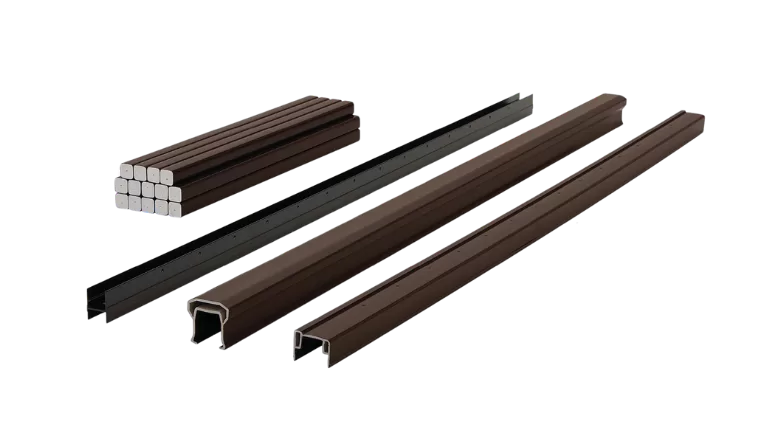
Structural Forms of Aluminum Cable Railing
1. Top-Mounted (Surface-Mounted):
Posts are anchored directly to the top of floors, decks, or stair landings. This is the most common installation method and is ideal for flat or even surfaces, offering straightforward installation and strong support.

2. Side-Mounted (Fascia-Mounted):
Posts are attached to the vertical face of a slab, stairway, or balcony edge. This design maximizes usable surface area, making it a popular choice for locations with limited space or where a clean, uninterrupted floor surface is desired.

3. Post-Free Design (Wall-Mounted Cable System):
In minimalist applications, cables are tensioned directly between walls or structural columns using wall brackets or anchor points, with no intermediate posts. This delivers a highly streamlined look but requires solid, load-bearing walls to ensure cable tension is safely maintained.
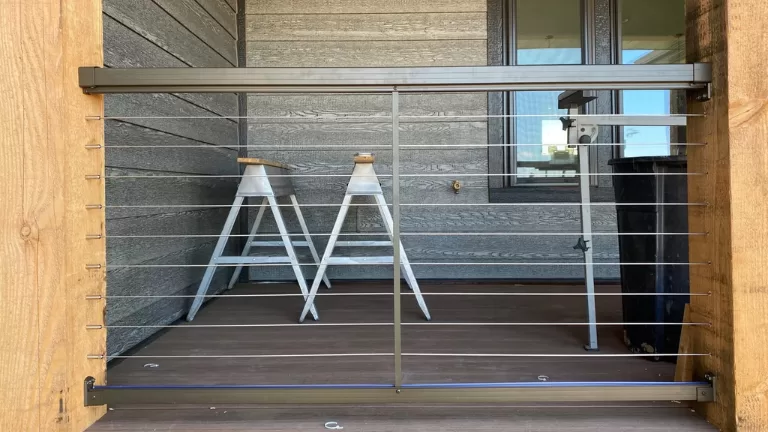
Comparison of Aluminium Cable Railing with Other Materials
| Feature/Material | Aluminum Cable Railing | Stainless Steel Cable Railing | Wood Railing |
|---|---|---|---|
| Weight | Lightweight | Heavier than aluminum | Medium, varies by wood type |
| Corrosion Resistance | Excellent, especially with powder coating/anodizing | Outstanding, especially with 316 stainless steel | Prone to rot and insect damage if untreated |
| Maintenance | Low; occasional cleaning | Very low; occasional cleaning | Requires regular staining/painting |
| Aesthetics | Modern, sleek, can be customized with coatings | Industrial, contemporary, polished appearance | Natural, warm, traditional |
| Strength | Good structural strength | Superior strength | Moderate |
| Installation | Relatively easy, lightweight components | More difficult due to weight and hardness | Moderate; can be cut and worked easily |
| Cost | Moderate | Higher initial cost | Moderate to low, depends on wood species |
| Lifespan | Long-lasting | Very long-lasting | Shorter without maintenance |
Factory Show
Our factory features 40 extrusion lines for efficient aluminum profile production. We offer a full range of surface treatments—including anodizing, electrophoresis, powder coating, sandblasting, and wood grain transfer printing—with advanced equipment. In-house casting, aging, annealing, water cooling, and machining ensure complete control and high-quality results for all products.
RFQ of Aluminum Cable Railing
1. Routine Cleaning: Wipe the surface with a soft cloth and a mild detergent (such as soapy water). Avoid using strong acids, strong alkalis, or steel wool to prevent scratching the surface.
2. Regular Inspection: Once a year, tighten the cable tensioners and check if the post screws are loose. Promptly address any worn or corroded components (stainless steel cables generally require minimal maintenance).
3. Extreme Weather Response: After severe weather events such as typhoons or heavy snow, inspect the structural stability. If any deformation is found, adjust or replace the affected parts as needed.
The heat treatment of aluminum extrusions determines their mechanical properties, strength, and suitability for specific applications. Among the various heat treatment methods, T5, T6, and T66 are the most commonly used. Here’s an in-depth look:
| Heat Treatment State | Cooling Method | Strength | Key Features and Benefits | Applications |
|---|---|---|---|---|
| T5 | Air cooling (fan) | Moderate | Adequate strength, good dimensional stability, used for architectural purposes. | Windows, doors, curtain walls, building structures. |
| T6 | Water quenching (fast) | High | Higher strength and hardness, ideal for industrial and structural uses. | Automotive, aerospace, machinery, transport parts. |
| T66 | Water quenching (fast) | Very high | Optimized mechanical properties for higher strength and performance demands. | Automotive, rail transportation, high-end machinery. |
Other Heat Treatment States
- T4: Solution heat-treated and naturally aged. Used in applications requiring intermediate strength and enhanced formability.
- T7: Overaged for better stress-corrosion resistance, often used for aerospace and marine purposes.
- O (Annealed): Very soft condition suitable for extensive forming or bending requirements.
- F (As-Fabricated): No heat treatment applied, used in non-critical applications with low strength requirements.
Aluminum extrusions undergo various surface treatments to enhance aesthetics, corrosion resistance, and functionality. Here are the common surface treatment methods used in the industry:
Main Surface Treatment Methods
Anodizing (Oxidation)
- Process: A controlled electrochemical process that forms a protective oxide layer on the aluminum surface.
- Features:
- Provides a durable, corrosion-resistant, and environmentally friendly finish.
- Produces a metallic finish with a variety of natural tones (e.g., silver, black, bronze).
- Improves surface hardness and protects against scratching.
- Applications: Architectural frames, decorative profiles, heat sinks.
Electrophoresis Coating (E-Coating)
- Process: After anodizing, the aluminum is coated with paint using an electrochemical process.
- Features:
- Enhances corrosion resistance and offers a smooth, glossy finish.
- Provides more color and texture variation compared to anodizing alone.
- Applications: Furniture profiles, indoor architectural components.
Powder Coating
- Process: Electrostatic application of powder paint, followed by curing under high temperature to form a solid coating.
- Features:
- Wide variety of colors and textures.
- Excellent weather resistance and corrosion protection.
- Cost-effective and highly versatile.
- Applications: Outdoor frames, fences, railings, general industrial use.
PVDF Coating (Polyvinylidene Fluoride)
- Process: A specialized fluoropolymer coating is applied in multiple layers, commonly over a pretreated surface.
- Features:
- Exceptional weather resistance and UV stability.
- Highly durable, resistant to fading, chalking, and chemical damage.
- Ideal for long-term outdoor use.
- Applications: Curtain walls, high-performance architectural facades.
Wood Grain Transfer Printing
- Process: A heat-transfer printing process that applies a wood grain effect onto a pre-coated aluminum surface.
- Features:
- Mimics the appearance of wood while retaining aluminum’s durability.
- Lightweight and weather-resistant alternative to natural wood.
- Applications: Furniture, decorative coverings, outdoor panels.
Film Lamination
- Process: Adhesive application of a protective or decorative film onto the aluminum surface.
- Features:
- Provides a glossy, textured, or patterned finish.
- Often used for applications requiring specific textures like marble or leather effects.
- Applications: Interior decor, windows.
Pre-Treatment Processes
Prior to surface treatment, the aluminum surface can be pre-processed for specific textures or finishes:
Brushing/Polishing
- Removes surface imperfections and creates a smooth, reflective finish.
- Often used for decorative purposes.
Sanding/Grinding
- Produces a matte or satin finish by applying abrasives.
Shot Blasting/Sandblasting
- Sprays abrasives at high velocity to create a textured surface, often used before anodizing for a uniform appearance.
Stretching and Tension Leveling
- Straightens the aluminum profile and improves shape accuracy after extrusion.
Cost and Durability Comparison Table
| Treatment Method | Process Cost | Surface Durability | Weather Resistance | Applications |
|---|---|---|---|---|
| Anodizing (Oxidation) | Medium | Very Durable | High | Architectural frames, industrial parts. |
| Electrophoresis (E-Coating) | Medium-High | Durable | Medium | Furniture, indoor parts, decorative uses. |
| Powder Coating | Medium | Highly Durable | High | Outdoor frames, industrial fixtures. |
| PVDF Coating | High | Extremely Durable | Excellent | Curtain walls, high-end exteriors. |
| Wood Grain Printing | Medium | Moderate (topcoat dependent) | Medium | Decorative panels, furniture. |
| Film Lamination | Low-Medium | Moderate | Low | Indoor decorations, windows. |
| Brushing/Sandblasting (Pre-Treatment) | Low | Not Applicable (Preparation only) | N/A | Preparation for further treatment. |
. Anodizing (Oxidation)
- Common Colors:
Natural silver
Black
Champagne
Light bronze
Dark bronze
Gold
2. Electrophoresis Coating (E-Coating)
- Common Colors:
Black
Champagne
Light bronze
Dark bronze
Custom metallic colors
3. Powder Coating
- Colors:
Can match any color based on the RAL color chart.
Offers textures like matte, gloss, satin, and custom finishes.
4. PVDF Coating (Polyvinylidene Fluoride)
- Colors:
Also customizable using the RAL color chart.
High-end finishes with matte or glossy effects.
5. Wood Grain Transfer Printing
- Colors and Patterns:
Mimics various wood types (e.g., oak, walnut, teak, mahogany).
Custom patterns available based on provided samples.
6. Film Lamination
- Colors and Patterns:
Includes textures like marble, leather, and solid colors.
Custom finishes and patterns based on provided samples.
Pre-Treatment Options (Impact on Final Color)
- Brushing/Polishing: Produces smooth or reflective metallic surfaces.
- Sandblasting: Adds a rough, matte texture before the final surface treatment.
We provide a wide range of machining services for aluminum extrusions to meet specific requirements. These include cutting off/section removal, slotting, drilling holes, tapping threads, bending, and localized stamping to create deformations. For example, we can trim extruded profiles to custom lengths, mill precise grooves, create threaded holes for fasteners, bend profiles into specific shapes, or apply localized stamping to achieve custom forms or deformation.
In addition to these processes, we also offer TIG/MIG welding to join aluminum components for a solid structure. Furthermore, our services include assembly of common accessories, such as brackets, corner connectors, screws, hinges, end caps, and rubber seals, providing complete and ready-to-install profile solutions tailored to your project needs. This ensures that we can handle everything from simple cuts to highly customized fabrication and assembly, all with precision and efficiency.
For custom aluminum extrusion projects, we accept a variety of drawing formats, including CAD files, STEP files, and PDF files. However, for extrusions that require additional machining processes, it’s recommended to provide STEP files, as they ensure precise 3D modeling for machining accuracy.
While PDF files are acceptable, converting them into CAD drawings may result in the loss of certain details, requiring us to manually redraw the design, which could increase lead time. For the fastest and most accurate quotation, we recommend providing CAD files (e.g., DWG/DXF) and STEP files to ensure efficient design evaluation and pricing.
Mold fees are an essential part of the custom aluminum extrusion process. Since every order requires a uniquely designed mold tailored to specific requirements, these molds cannot be used for other products. Therefore, the mold fee is necessary and non-negotiable.
We require 100% upfront payment of the mold fee before mold development begins to ensure timely production. However, as a token of appreciation for your support, we offer a refund of the mold fee or equivalent discounts once the order reaches a certain production volume. Specific policies can be discussed based on your order volume and collaboration details.
Our minimum order quantity (MOQ) varies depending on the size of the product. For smaller-sized products, the MOQ is typically 500kg, while for larger-sized products, it is 2 tons.
We will specify the exact MOQ requirements during the quotation process. If your order quantity does not meet the MOQ, we can still arrange production, but an additional fee will be applied to cover mold preheating and production setup time. Rest assured, this extra fee will be reasonable, and we aim to keep it as minimal as possible to ensure smooth cooperation.
Packaging can be customized according to your needs. Options include using protective film or paper to separate and protect the surface, or foam film for additional surface protection. Products can be palletized or packed into cartons, and the quantity per pallet or carton can be specified by the customer.
The standard packaging involves bundling several pieces together with plastic wrap and then securing them onto pallets. Any packaging requirements beyond the standard will be accommodated, and the associated costs will be clearly provided to the customer.
Mold production typically takes 7 days. After the sample is confirmed, producing a full container load of 26 tons generally requires 14 days for extrusion alone. If surface treatment is required, an additional 3 days will be needed. For machining, extra time will be required depending on the complexity and volume of the machining work. The exact additional time for machining will be determined based on the specific processing requirements.
Aluminum profiles are naturally corrosion-resistant due to the formation of a thin, protective oxide layer when exposed to air or water. This oxide layer is stable and self-repairing, meaning that even if the surface is scratched or cut (such as at exposed ends or during processing), the aluminum will not rust or corrode like iron or steel. Instead, the exposed areas will quickly form a new oxide layer, providing continuous protection against further oxidation.
With proper design, installation, and maintenance, aluminum profiles can last for decades, even in challenging environments. For example, untreated aluminum can easily withstand 20-30 years in outdoor applications, while profiles with surface treatments like anodizing or powder coating can last even longer, often exceeding 50 years. This makes aluminum an excellent choice for applications where durability and long-term performance are essential.
The price of aluminum profiles consists of several components: raw material costs, extrusion processing fees, surface treatment fees, machining costs, and additional packaging fees. Among these, the cost of aluminum as a raw material tends to fluctuate frequently, while other fees remain relatively stable. Due to these fluctuations, our quotations are typically valid for 7 days.
Pricing can be structured in different ways depending on the product and requirements. It can be calculated by weight (e.g., cost per ton), by length (e.g., cost per meter), or by piece (e.g., cost per unit). For products involving extensive machining, such as heat sinks, pricing is generally calculated on a per-piece basis to accurately reflect the additional processing costs. This flexible pricing approach ensures the quote is tailored to the specific needs of the customer.
We can manufacture aluminum profiles in compliance with technical requirements that meet European standards (EN), American standards (ASTM/AA), or other standards as specified by the customer. Custom production is tailored to ensure that the profiles meet the specific standard requirements requested.
Our production equipment is designed for the metric system. If the drawings provided are in the imperial system, we will convert them into metric units for production to ensure accuracy.
It is important to note that while we can machine imperial-threaded holes for fasteners, if you require us to supply matching imperial fasteners, they may not always be available in stock. Custom orders for imperial fasteners typically require a large volume for production. Please consider this when planning your project.
